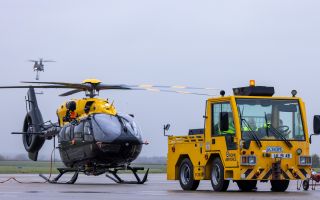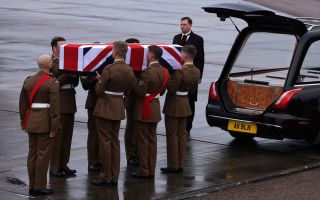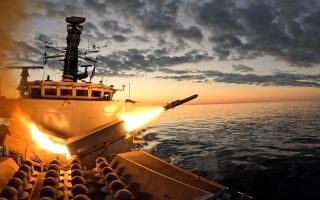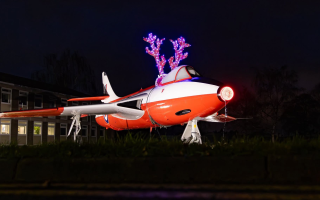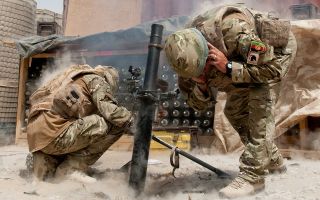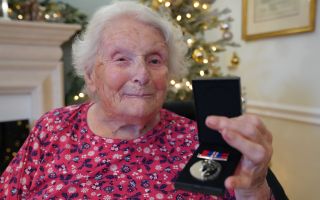Helicopters do the elephant walk: No trunks, tusks or tails, just plenty of firepower
Twenty-four British and French helicopters have taken off en masse to launch a major exercise that will show their readiness for Nato combat operations.
The formation of eight Apache, 10 Wildcat, two Chinook and four Gazelle helicopters lifted off from Wattisham Flying Station in Suffolk after taxiing along the runway together.
Military pilots call this an "elephant walk" with the aircraft following each other nose to tail, but the real reason is to send a message to would-be aggressors about how strong, ready and coordinated the forces are.
- Your order is complete: British Army takes delivery of final AH-64E Apache
- Time to go home: Chinooks' firefighting mission in Cyprus draws to a close
- Army Wildcats and Apaches team up with US to play hide and seek
While the Wattisham walk involved 24 helis, up to 50 will eventually be taking part in the exercise, along with 1,000 vehicles and 2,000 personnel.
Soldiers from the British Army and airmen and airwomen from the Royal Air Force will be joined by soldiers from the Armée de Terre – the French army – and the US Army.
The training on Exercise Pinion Titan is being led by 1st Aviation Brigade and will continue until the end of the month.
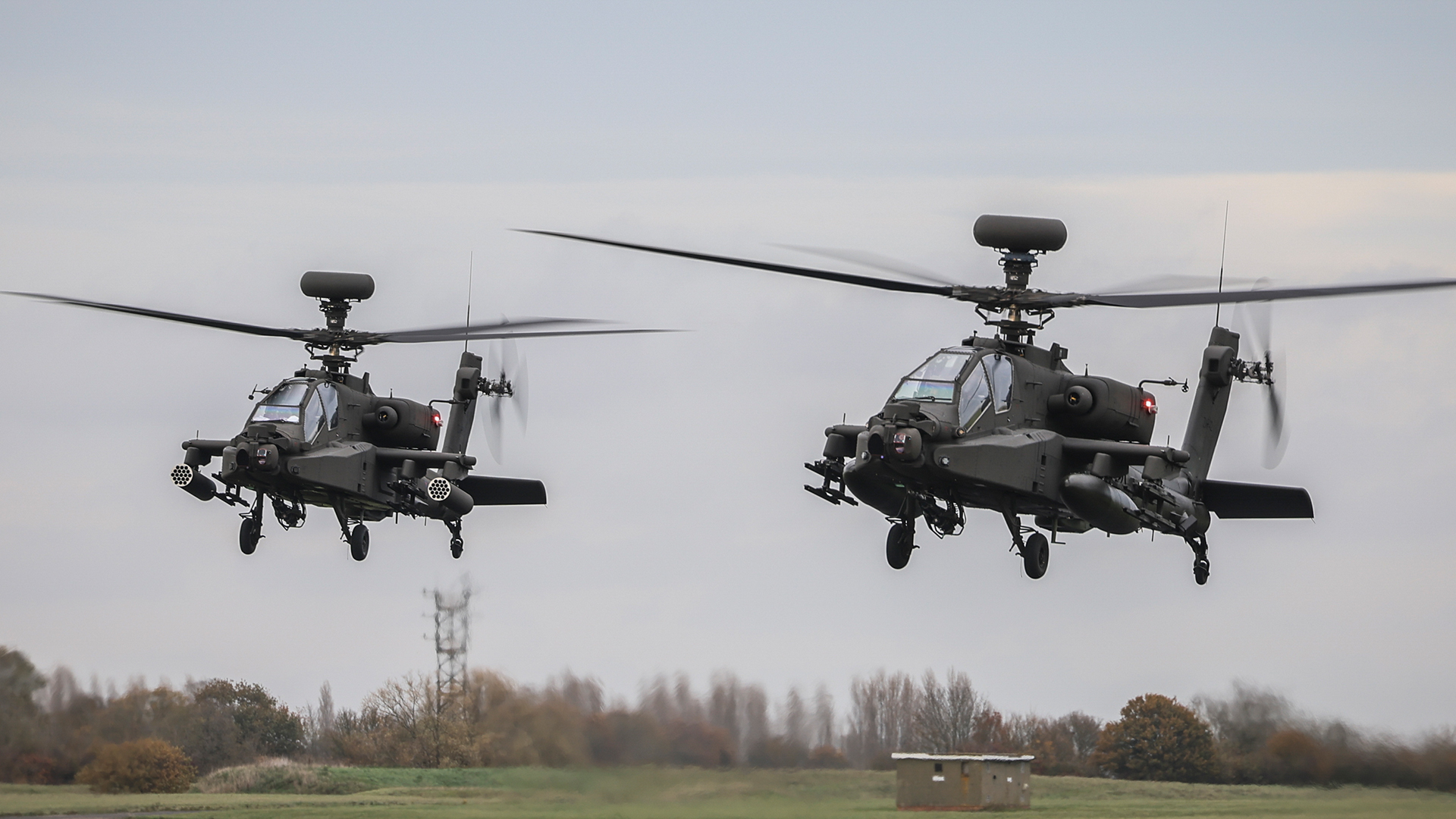
Brigadier Nick English, the commander of 1st Aviation Brigade, said of the mass taxi and take-off: "An elephant walk is a striking demonstration of strength and readiness.
"Preparing four different types of aircraft to fly together is a significant engineering and logistical achievement. It proves to us and to potential adversaries that we have the teamwork and coordination needed for real-world combat operations.
"Exercise Pinion Titan marks the end of a modernisation programme started when 1st Aviation Brigade was formed in 2020.
"Every one of our soldiers, vehicles and helicopters is going into the field for us to test our capabilities together.
"We will be working closely with the RAF, our French and US allies, and integrating cutting-edge technologies such as drones and advanced communications systems.
"This exercise demonstrates that 1st Aviation Brigade is one of Nato's most capable and ready formations, prepared to defend the UK and our allies."

A period of initial training at Wattisham will see the force set itself up as two battlegroups, led by 3 Regiment and 4 Regiment Army Air Corps. A team of planning officers from the US 12th Combat Aviation Brigade will be working with 4 Regiment AAC.
The troops will then set up bases across northern England to fly and maintain their helicopters. The battlegroups will plan and carry out practice missions, with helicopters flying from the Scottish Highlands all the way to Salisbury Plain.
In deep strike operations, Apache and Gazelle attack helicopters will fly far behind enemy lines to strike targets like artillery and supply depots.
Destroying key targets like these makes the fight easier for soldiers on the frontline.
In air assault operations, RAF Chinook helicopters from 18 Squadron will transport paratroopers and equipment into action. Apaches and Gazelles will fly alongside the Chinooks to protect them.
Meanwhile, the advanced sights and sensors of the Wildcat reconnaissance helicopters from 1 Regiment AAC will gather information about the enemy to help plan missions.

